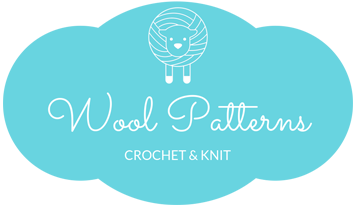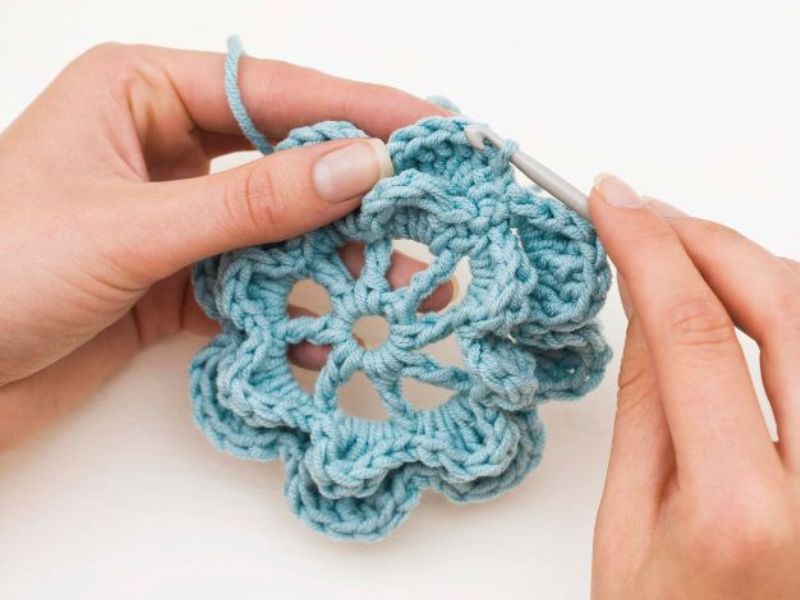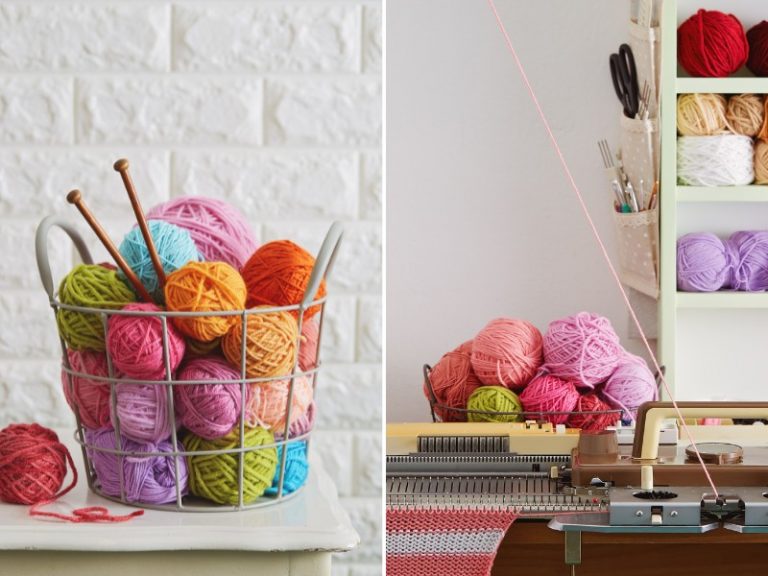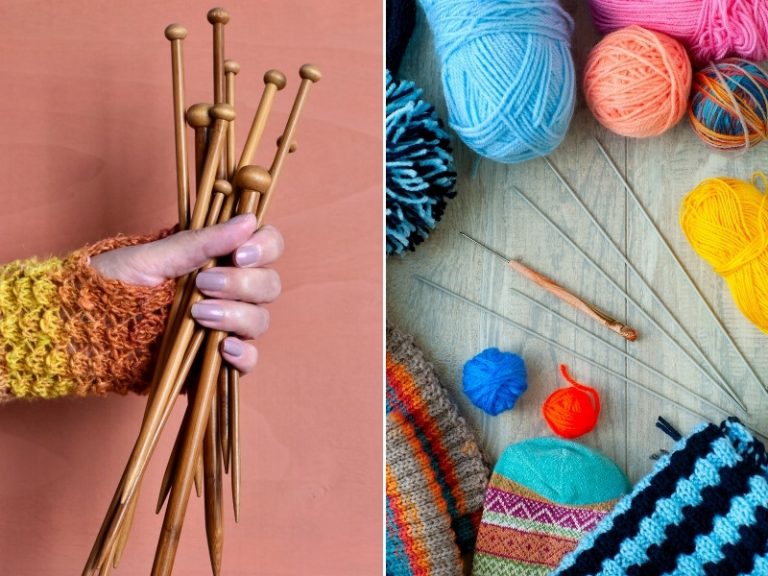How To Crochet – A Beginner’s Guide
Crocheting is a hobby that brings not only a lot of fun but also great satisfaction. Just think about how many beautiful things you can create with it. Whether you want to whip up cozy scarves or cute coasters, this guide will get you started! Find out the basics of this craft and learn how to crochet.
What is the difference between knitting and crocheting
Knitting and crocheting make two distinct crafts with which you can transform yarn into fabric.
Knitting requires you to work the yarn with two needles to create rows of interlocking loops. Crocheting, in contrast, uses a single hook to make one stitch at a time. This allows for quick project completion and versatile shapes like circles and squares.

What are the basic materials needed to start crocheting
To kick off your crocheting journey, you’ll need some yarn, a crochet hook, and scissors. A beginner might also find a yarn needle useful for weaving in ends, and a measuring tape to check the size of your work. Start with basic supplies and expand your toolkit as you master more techniques.
How do I choose the right size crochet hook
Selecting the right crochet hook size can greatly affect your project’s outcome. The yarn label will suggest an appropriate hook size. However, beginners might find it easier to start with a larger hook, such as an H-8 (5mm), to easily see and work the stitches.
As you become more comfortable, experimenting with different sizes can help refine your technique.
What is the best type of yarn for beginners
The best type of yarn for beginners is usually a medium-weight yarn, also known as worsted weight. It’s thick enough to handle easily and works up quickly.
Choose a light color to better see your stitches. Avoid textured yarns at first, as they can make learning stitches more challenging.

How do I hold the yarn and hook when crocheting
Holding the crochet hook and yarn correctly is fundamental if you want to develop a smooth crocheting technique. There are two ways in which you can hold your hook. You can do it using a pencil or a knife method, depending on what feels more comfortable for you.
Pencil grip
Grab your hook like a pencil with your dominant hand. The handle should rest against your palm with your thumb and index finger securing it near the flat part of the hook.
Knife grip
Hold the hook in your right hand (dominant) as you would a dinner knife. The handle rests in your palm with your fingers wrapped around it, and your thumb placed along the top side of the handle. This grip puts less strain on your wrist, making it ideal for those who may experience hand fatigue.
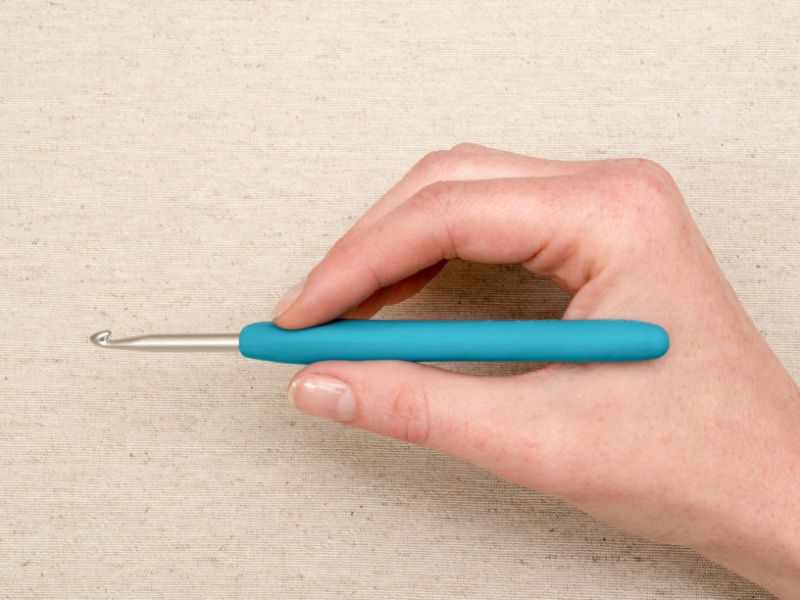
How To Hold Your Yarn When Crocheting
Hold the yarn in your left hand (non-dominant) to maintain tension. You can do this by weaving the yarn through your fingers as follows:
- Loop it over your pinkie.
- Go under your ring finger.
- Run it over your middle finger.
- Hold it securely with your thumb and index finger.
This method will help you control the flow of yarn and maintain even tension, leading to more consistent stitches.
What are the different types of crochet stitches
Crochet offers a variety of stitches that allow you to create a diverse array of patterns and textures. For starters, you should focus on mastering the most common techniques. These stitches form the foundation of all crochet projects and are perfect for beginners to start with:
Chain Stitch (ch): The beginning step for almost all projects, used to create the foundation row.
Slip Stitch (sl st): Used to join stitches together without adding height, often used for seaming or working in rounds.
Single Crochet (sc): The simplest of the basic stitches, forming a tight and dense fabric.
Half Double Crochet (hdc): It’s taller than a single crochet stitch but shorter than a double crochet, useful for creating a bit more texture.
Double Crochet (dc): Twice as tall as a single crochet, the double crochet stitch works up quickly and is common in sweaters and blankets.
Treble Crochet (tr): A longer stitch that creates a looser and more drapey fabric, used in airy summer projects.
Each of these stitches can go in different combinations to create unique and beautiful handmade items. Practicing with these stitches will enhance your crafting skills. And that also means your ability to tackle more complex projects.

How do I read a crochet pattern
To read and understand crochet patterns you need to know the commonly used abbreviations and symbols. Each pattern typically comes with a legend that explains the meaning of these shortcuts. Start with simple patterns to build confidence. Then you can gradually take on more complex instructions as you understand the language of crochet patterns.
What are the best projects for beginners to start with
Beginners should look for projects that use simple shapes and require minimal fitting, such as:
These projects will allow you to practice basic stitches and techniques without overwhelming you with complex patterns or shapes. Once you’re comfortable, you can progress to more elaborate projects like hats or amigurumi.

How long does it take to learn how to crochet
The time needed to learn to crochet will vary from person to person. However, using good online resources can speed up the learning process. There are tons of blogs that provide patterns and tips for beginner crocheters.
If you would like to learn crochet step by step, I highly recommend checking out this guide:
It covers all the basics, provides helpful tips, and shows how to make the basic stitches every beginner should start with.
Consider also visiting platforms like YouTube with helpful tutorials and Facebook groups that offer support and inspiration. With the right guidance, you will swiftly advance in this rewarding craft.
Summary
Crocheting opens up a world of creativity and handmade treasures. This guide has equipped you with the essentials. Now, you’re ready to learn your first stitches and weave a little magic of your own!
FAQ
Can I use the same pattern for different projects?
You can adjust the same pattern for different projects by changing the yarn or hook size. However, you should always keep it in mind how it will alter the texture and size of the finished item. Making changes to patterns requires some skill and experience. Therefore, as a beginner, it is better to follow a pattern.
How do I increase or decrease stitches in a project?
To increase stitches, make more than one stitch into the same space. To decrease, combine two or more stitches together into one.
Is it better to learn through videos or written instructions?
This depends on your learning style. Videos can provide a real-time demonstration which is helpful for beginners. Written instructions, on the other hand, are great for reference as you work.
How do I fix mistakes in my crochet work?
To fix mistakes, simply pull out the stitches back to where you made the error (called “frogging”), and re-crochet correctly.
Can I crochet with multiple colors in one project?
Yes, you can easily add multiple colors to your project to create stripes, gradients, or other colorful patterns.
How do I add decorative elements to my crochet projects?
You can add decorative elements like beads, buttons, or embroidery by sewing them onto the finished crochet piece.
How do I make a slip knot?
To make a slip knot, loop the yarn around your fingers to create a circle, then pull a loop of yarn through this circle and tighten.
What is the best way to block and finish a crochet project?
Blocking involves wetting your finished project, shaping it to the correct dimensions, and letting it dry. This helps set the stitches and improve the look of your crochet work.
